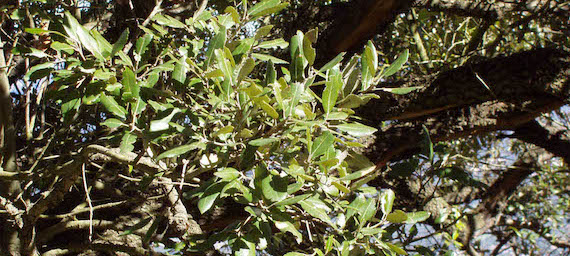Reference : Nunes A, Köbel M, Pinho P, Matos P, de Bello F , Correia O, Branquinho C (2017) Which plant traits respond to aridity? A critical step to assess functional diversity in Mediterranean drylands. Agricultural and Forest Meteorology, 239, 176-184
Highlights
- Functional traits may reveal aridity impacts in drylands due to climate change.
- Deciding which functional traits to use is critical to assess functional diversity.
- We found 9 plant traits affected by aridity along a gradient in Holm-oak woodlands.
- Aridity changed plant functional structure and reduced functional dispersion.
- We provide a key basis to study aridity impacts on drylands’ functional diversity.
Abstract
Aridity acts as a strong environmental filter to plants, limiting major ecosystem processes. Climate change models predict an overall increase of aridity in drylands. This could lead to changes in plant communities, particularly in the dominance and range of plant functional traits, which largely determine ecosystem functioning. However, to study how changes in aridity may affect plant functional metrics, a critical decision needs to be taken: the choice of the functional traits to be studied. Previous studies related plant functional traits and aridity, however mostly focusing on a single facet of functional diversity and primarily on perennial species. Hence, the response of plant traits to aridity quantifying different functional metrics at the whole-community level (considering also annual species) is not well established in drylands.
Here, we use a high-resolution aridity gradient along a Mediterranean dryland ecosystem of Holm-oak woodlands to identify plant functional traits responding to aridity at the community-level (comprising annual and perennial species). We studied how the community-weighted-mean and functional dispersion of 13 traits related to plant establishment, growth, reproduction, dispersal and persistence changed with aridity.
Nine plant functional traits varied with aridity. Aridity acted as an environmental filter on community-weighted-means, increasing the dominance of annual species, particularly rosettes, and plants with lower maximum height, shorter flowering duration, and increased anemochorous dispersal. Higher aridity was associated to an overall decrease in functional dispersion, particularly for life cycle, specific leaf area, onset of flowering, dispersal strategy and seed persistence traits, probably due to a lower niche differentiation under more arid conditions. The changes in community-weighted-means and in functional dispersion due to aridity are likely to negatively affect major ecosystem functions such as biomass production and nutrient cycling.
Our results fill an important knowledge gap by quantifying how the functional structure and dispersion of 13 plant traits change with aridity at the whole-community level, providing an important basis for the selection of key functional traits to be used in trait-based studies in drylands.

 Go to article
Go to article